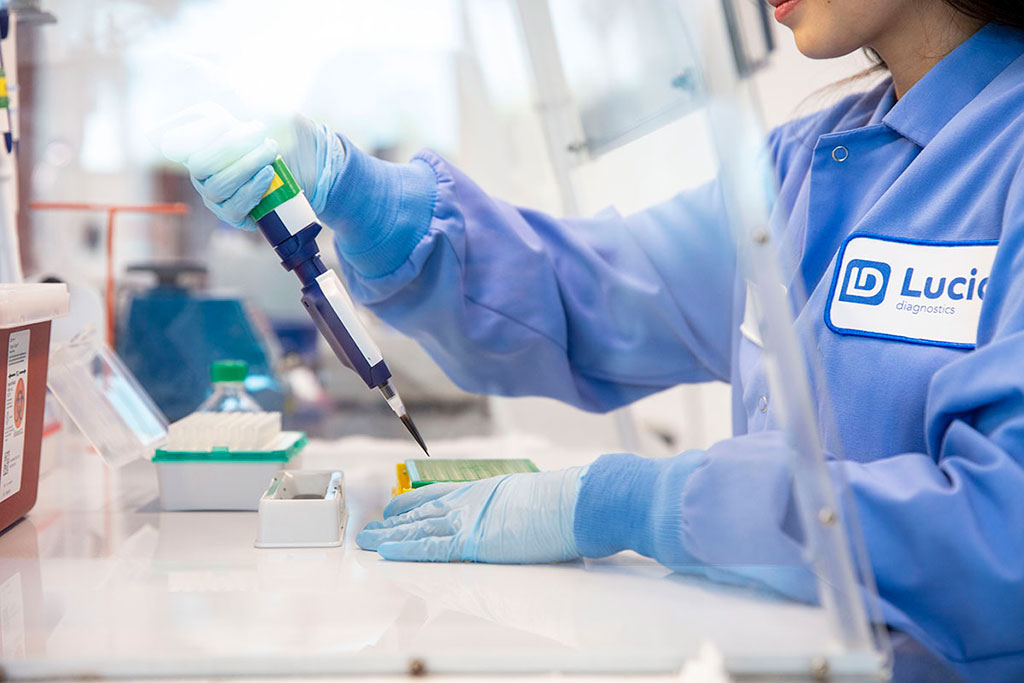DNA Test Detects Esophageal Precancer and Cancer at POC without Endoscopy
Posted on 12 May 2023
Gastroesophageal reflux disease (GERD), a medical condition commonly referred to as chronic heartburn, is characterized by the upward movement of digestive liquid from the stomach into the esophagus, leading to inflammation of the esophageal lining. Millions of individuals who experience this condition face the potential risk of progressing toward precancerous conditions and, subsequently, esophageal cancer. Chronic heartburn could also be indicative of a more serious condition known as Barrett's Esophagus (BE), which places individuals at a heightened risk of developing esophageal adenocarcinoma (EAC) - a lethal cancer type. The early identification and diagnosis of BE and precancerous cells can lead to timely treatment, averting the onset of fatal esophageal cancer. However, the current screening process for BE involves endoscopy - an invasive, expensive procedure that is not regularly employed. Now, a revolutionary non-invasive, office-based DNA test uses advanced molecular diagnostic techniques to assess signature epigenetic changes indicative of BE and EAC in at-risk GERD patients.
Lucid Diagnostics Inc.’s (New York, NY, USA) EsoGuard esophageal DNA test analyzes 31 methylated biomarkers to detect BE and EAC with over 90% sensitivity and specificity. The test examines individual DNA molecules for the presence or absence of cytosine methylation at 31 different genomic positions. EsoGuard offers a five-minute procedure that enables the detection of BE and EAC without the need for endoscopy. During the procedure, cells are collected from the patient's esophagus by having the patient swallow a capsule attached to a thin catheter until it reaches the stomach. The balloon within the capsule is then inflated and gently withdrawn until resistance indicates its position at the GEJ, where target cell collection begins. Following the completion of cell collection, the gathered cells are pulled into the capsule to prevent dilution and contamination during device retrieval. The balloon with the sampled cells is then placed in a preservation solution for transport to a diagnostic testing facility.

EsoGuard continues to exhibit superior detection capabilities for esophageal precancer and cancer, including in the most common and challenging precancer subgroup—short segment non-dysplastic BE. In the most recent clinical study involving the EsoGuard esophageal DNA test, 69 patients underwent non-endoscopic esophageal precancer biomarker testing. The test was followed by a confirmatory upper endoscopy as part of a prospective investigator-initiated clinical trial. The sensitivity of EsoGuard was recorded at 100%, and it accurately identified all seven patients with endoscopically confirmed esophageal precancer or cancer. Six of these patients had early precancerous non-dysplastic BE—four with short segment BE and two with long-segment BE. The seventh patient was diagnosed with previously undetected Stage III esophageal cancer (adenocarcinoma) and was treated with chemotherapy and radiation. The estimated negative predictive value (NPV) and positive predictive value (PPV) were 100% and 37%, respectively, based on the expected prevalence in a screening population, aligning with the generally accepted standards for a widespread screening tool.
“EsoGuard's overall sensitivity remains excellent, including the detection of one patient with silent esophageal cancer; it's performance in short segment BE—the most prevalent esophageal precancer subgroup and most challenging to detect—is particularly impressive,” said Suman Verma, M.D., Ph.D., Lucid Senior Vice President, and Chief Scientific Officer. “This success can be attributed to EsoGuard's unrivaled ability to detect even the earliest epigenetic changes in esophageal precancer, as well as EsoCheck's proprietary Collect+Protect technology's ability to provide anatomically precise, and protected sampling of lower esophageal cells.”
Related Links:
Lucid Diagnostics Inc.













